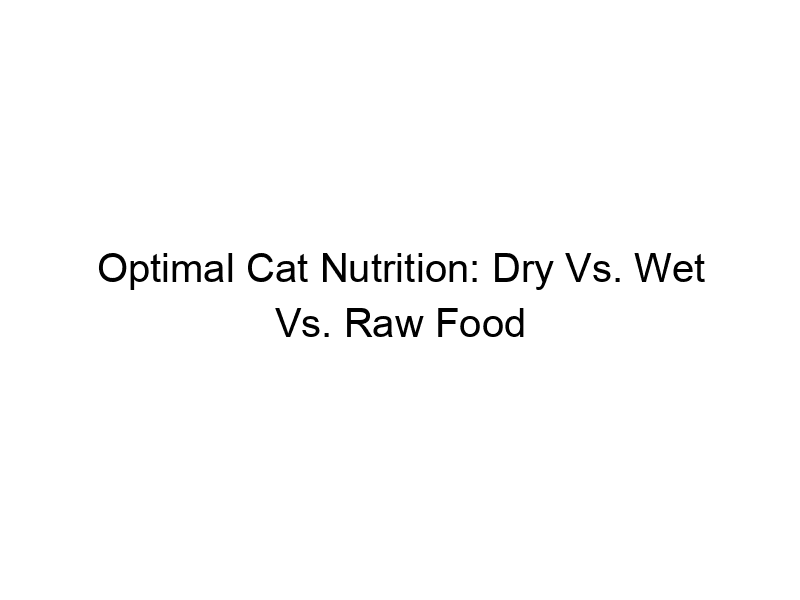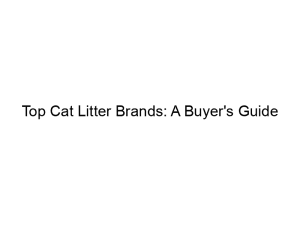Choosing the right food for your feline companion is crucial for their health and well-being. This comprehensive guide will help you navigate the complex world of cat nutrition, comparing the advantages and disadvantages of dry, wet, and raw food diets. We’ll explore ingredients, nutritional value, potential health risks, and cost considerations to help you make an informed decision about the best diet for your cat. You’ll learn how to decipher pet food labels, understand essential nutrients, and choose the optimal feeding approach for your cat’s specific needs and lifestyle.
Cats are obligate carnivores, meaning their bodies are designed to thrive on a diet primarily composed of animal-based proteins. Essential nutrients include taurine (crucial for heart health), arachidonic acid (for skin and coat health), and vitamin A (for vision and immune function). A deficiency
in any of these can lead to serious health problems.
Deciphering Pet Food Labels
Learning to read pet food labels is critical. Look for the guaranteed analysis, listing minimum percentages of protein, fat, and fiber. Check the ingredient list – animal protein sources should be listed first, ideally named specifically (e.g., chicken, salmon, turkey). Avoid artificial colors, flavors, and preservatives whenever possible.
Dry Cat Food: A Convenient Option
Advantages of Dry Food
Dry food is convenient, affordable, and has a long shelf life. It’s often fortified with vitamins and minerals, helping to ensure your cat receives essential nutrients. Many brands offer various formulas catering to specific needs, like weight management or sensitive stomachs.
Disadvantages of Dry Food
Dry food typically contains a higher percentage of carbohydrates compared to wet food, which may not be ideal for obligate carnivores. The low moisture content can contribute to dehydration, especially in cats prone to urinary tract issues. The lower moisture content can lead to increased risk for urinary tract disease.
Wet Cat Food: Moisture and Flavor
Advantages of Wet Food
Wet food is higher in moisture content, helping cats stay hydrated and promoting healthy urinary tract function. It often has a more appealing taste and texture than dry food, encouraging picky eaters to consume their meals. Many wet food options contain higher protein percentages than dry food.
Disadvantages of Wet Food
Wet food is generally more expensive than dry food and has a shorter shelf life once opened. It’s also less convenient for long-term storage due to refrigeration requirements. Not all wet foods are created equal, carefully read the ingredients to choose ones with high-quality protein sources.
Raw Cat Food: A Controversial Choice
Advantages of Raw Food
Raw food diets often consist of uncooked meat, bones, and organs. Proponents claim that this mimics a cat’s natural diet, offering high-quality protein and nutrients. Some believe it supports better digestion and overall health.
Disadvantages of Raw Food
Raw food diets pose a significant risk of bacterial contamination (Salmonella, E. coli). There’s a risk of nutritional imbalances if not carefully formulated by a veterinarian. It’s also more time-consuming and expensive to prepare. Proper handling and storage are vital to minimize risks.
Comparing the Three Diets: A Detailed Analysis
Nutritional Comparison: Protein, Fat, and Carbohydrates
A detailed comparison table highlighting protein, fat, and carbohydrate content in dry, wet, and raw food would be helpful here. This table would need to be filled with realistic data obtained from research on commercial pet foods to demonstrate clear differences.
Cost Comparison: Budgetary Considerations
A discussion comparing the cost per day of feeding a cat each type of food. Factors like portion size, brand, and availability should be noted.
Convenience and Time Commitment
This section will explain the difference in the effort and time needed to prepare each kind of cat food. This will include things like the necessity for meal prep, refrigeration, and purchasing.
Choosing the Right Diet for Your Cat
Factors to Consider: Age, Breed, Health Conditions
This section will provide guidance for selecting the best diet based on several factors, such as age, breed, allergies, existing health problems, and lifestyle.
Transitioning to a New Diet: A Gradual Approach
How to Safely Switch Your Cat’s Food
This section will offer advice on the safest method of switching a cat’s food to avoid digestive upset. It will detail a plan involving gradual mixing.
Addressing Common Concerns About Cat Nutrition
Allergies and Sensitivities: Identifying and Managing Them
This section will cover identifying signs of food allergies in cats and how to work with a vet to manage it. A discussion of hypoallergenic and limited-ingredient diets is included.
Understanding Obesity in Cats
Weight Management Strategies and Food Choices
Discuss the problem of feline obesity and how to recognize it. Mention suitable diets and the importance of maintaining a healthy weight.
Kidney Disease and Renal Failure in Cats
Dietary Recommendations for Cats with Kidney Issues
Explain the relationship between diet and kidney function. This section includes dietary advice to help manage kidney problems.
Urinary Tract Health and Cat Food
Preventing and Managing Urinary Tract Infections
Discuss the link between diet and urinary tract health. Explain how to select foods that reduce risk.
Dental Health and Cat Food
The Role of Diet in Maintaining Oral Hygiene
Explore the effects of different diets on dental health. Recommend specific food types for minimizing plaque and tartar.
Homemade Cat Food: Pros, Cons, and Recipes
Formulating a Balanced Homemade Diet
Give information on the challenges and potential rewards of making cat food at home. Discuss ingredients and precautions. Provide a basic recipe, but stress consultation with a vet.
Frequently Asked Questions
What are the main differences between dry, wet, and raw cat food?
Dry food is convenient and affordable but lower in moisture. Wet food is higher in moisture, promoting hydration but is more expensive. Raw food mirrors a natural diet but carries risks of bacterial contamination.
How much should I feed my cat?
Feeding amounts depend on your cat’s age, weight, activity level, and the food’s calorie content. Follow the feeding guidelines on the food packaging or consult your veterinarian.
Can I switch my cat’s food suddenly?
No, abrupt changes can cause digestive upset. Gradually transition over 7-10 days by mixing the new food with the old.
What are the signs of a food allergy in cats?
Symptoms include skin problems (itching, redness), digestive issues (vomiting, diarrhea), and respiratory problems.
Is raw food safe for my cat?
Raw food carries risks of bacterial contamination. Consult your veterinarian before considering a raw diet. Thorough preparation and sanitation are crucial.
What should I look for in a high-quality cat food?
High-quality cat foods list named animal protein sources first, have minimal fillers, and are fortified with essential nutrients.
Final Thoughts
Choosing the best diet for your cat is a critical decision impacting their health and longevity. While dry food offers convenience, wet food provides essential moisture, and raw food mimics a natural diet, each option has advantages and disadvantages. By carefully considering your cat’s individual needs, age, health status, and your budget, you can make an informed choice. Remember to consult with your veterinarian for personalized dietary recommendations. Don’t hesitate to ask questions and explore different options to find what works best for your feline companion. A healthy diet is the foundation of a happy and long life for your beloved cat.




